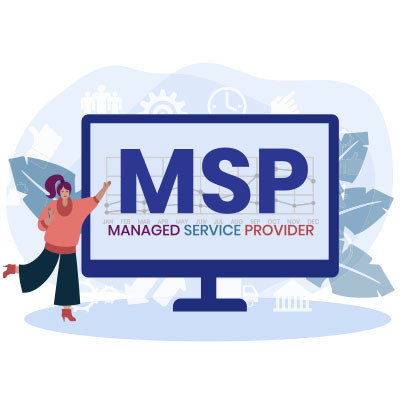It’s always an exciting time when you commit to a new IT project that promises to change your organization for the better. Of course, the exciting stuff is what comes after the implementation process—a process that can range from easy-as-pie to incredibly complex and stressful, depending on the expertise your organization employs.
PC PLACE Blog
Technology has ingrained itself into just about every facet of modern life, particularly in the business world where every competitive edge makes a difference. Many small and medium-sized businesses simply don’t have the staff on-hand to manage and maintain their technology solutions, instead opting to outsource this important responsibility to managed service providers (MSPs).
Cost/Benefit is a term you hear a lot. It’s always used in conversations about potential investment and means something. Well, at least it should. One of the places that many people can gain benefits from their investments is by outsourcing some of their responsibilities to an outside vendor. This works especially well with IT management. Let’s take a look at why outsourcing your technology support and management is a good investment.
SMBs need to be able to navigate the complexities of IT, whether it’s with a completely outsourced IT department or an in-house team of technicians. However, if you are thinking of technology management in this black-and-white way, you are eliminating the potential for enormous benefit through the use of co-managed IT.
Businesses will often go into the process of self-improvement with unrealistic expectations for how much they can significantly improve their functionality. This simply is not true, and sometimes business owners need to realize that real change—the kind that yields real results—takes time. Thankfully, there are some actionable steps you can take to ensure that your business is moving in the right direction.
Having a professional perspective always helps, it’s just that in today’s world of inflated rates for everything, it’s hard to find experts that don’t charge an arm and a leg. IT consulting plays a crucial role in helping businesses gain a better perspective on their technology landscape. Here are several ways in which IT consulting can contribute to a more informed and strategic approach to technology within a business.
A company’s IT strategy can define how it handles its entire operational strategy. That’s why it is so important to carefully consider your organizational approach to IT. Not only does it allow you to align your IT, and its support, to your business’ goals, but it also allows you to consider the circumstances that you operate under and find viable solutions to business problems. That’s not all. Let’s list some of the reasons that businesses should consider customizing their IT strategy to their business initiatives.
Many businesses, irrespective of their size, are increasingly turning towards managed services to streamline their operations, reduce expenses, and elevate their overall customer value proposition. The utilization of managed services has revolutionized the landscape, not just in terms of cost-saving, but also in facilitating businesses to grow and extract greater value from their IT infrastructure. Let's take a look into how managed services achieve this dual objective.
Technology is important for many reasons, chief among them your business’ continued efficiency and productivity. The problem with technology, though, is that it will never last forever, and you’ll have to replace it sooner or later. Thankfully, you can delay those costs considerably by implementing a proactive technology management plan, effectively keeping the same technology running longer.
Businesses use all types of sayings to try to draw in customers. One of the core selling points of managed IT services is that “it pays for itself”. This is more than just marketing. The multiple services that make up managed IT services all help a business save time and money, but when added together, it can really help the bottom line of a business more than most services they can use. In this week’s blog we thought we would go through the core elements of a managed IT services agreement to show how it really does pay for itself.
Running a small business is hard enough without having to constantly worry about your budget holding you back. You need stable costs if you want to maximize your business’ potential revenue, and you want to ensure that your investments are bringing in the kinds of returns you expect. This is where remote monitoring and maintenance can come in handy.
When it comes to technology, it’s often difficult to understand how every bit of it fits into a complete IT infrastructure. In fact, if you were to ask your staff to communicate with your technology vendors, would they know how to do so? Understanding where your technology comes from, namely your vendors, is an important part of streamlining your business’ operations.












